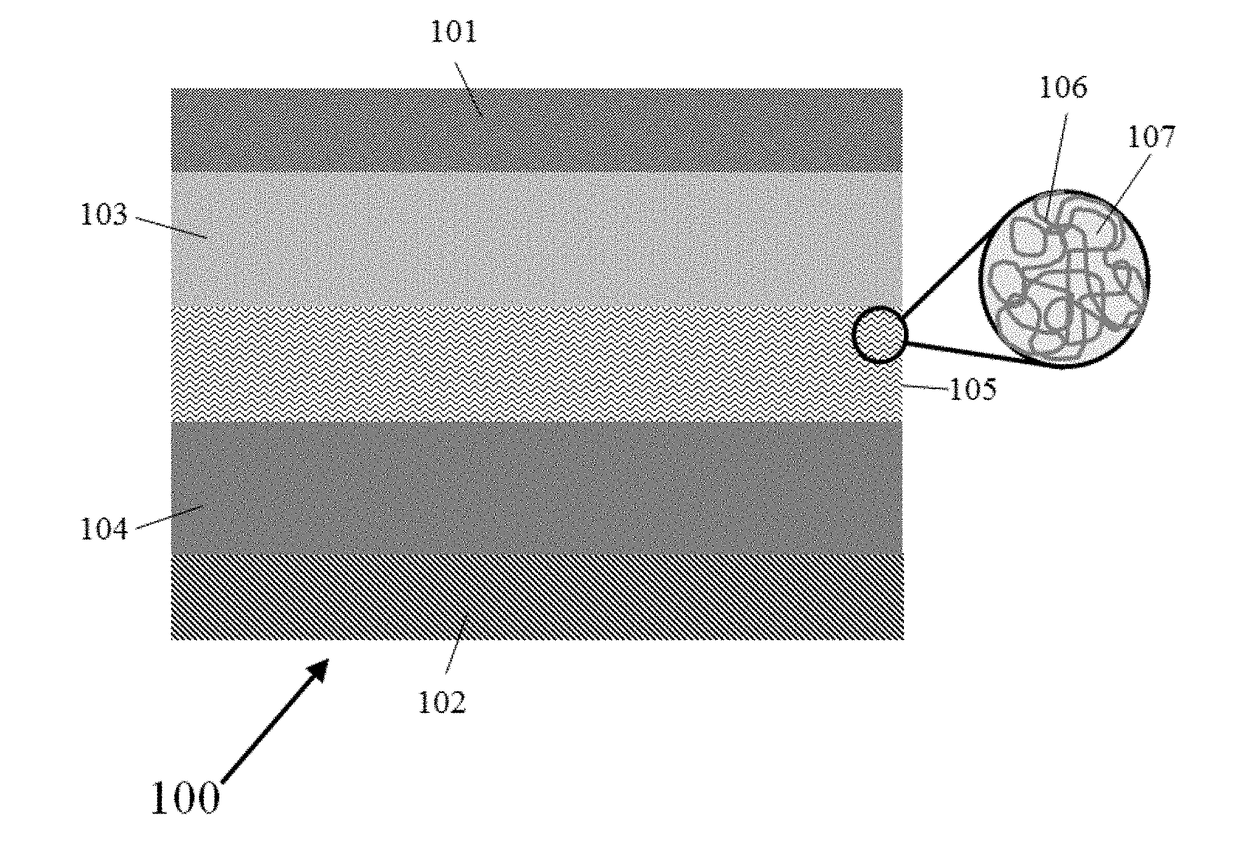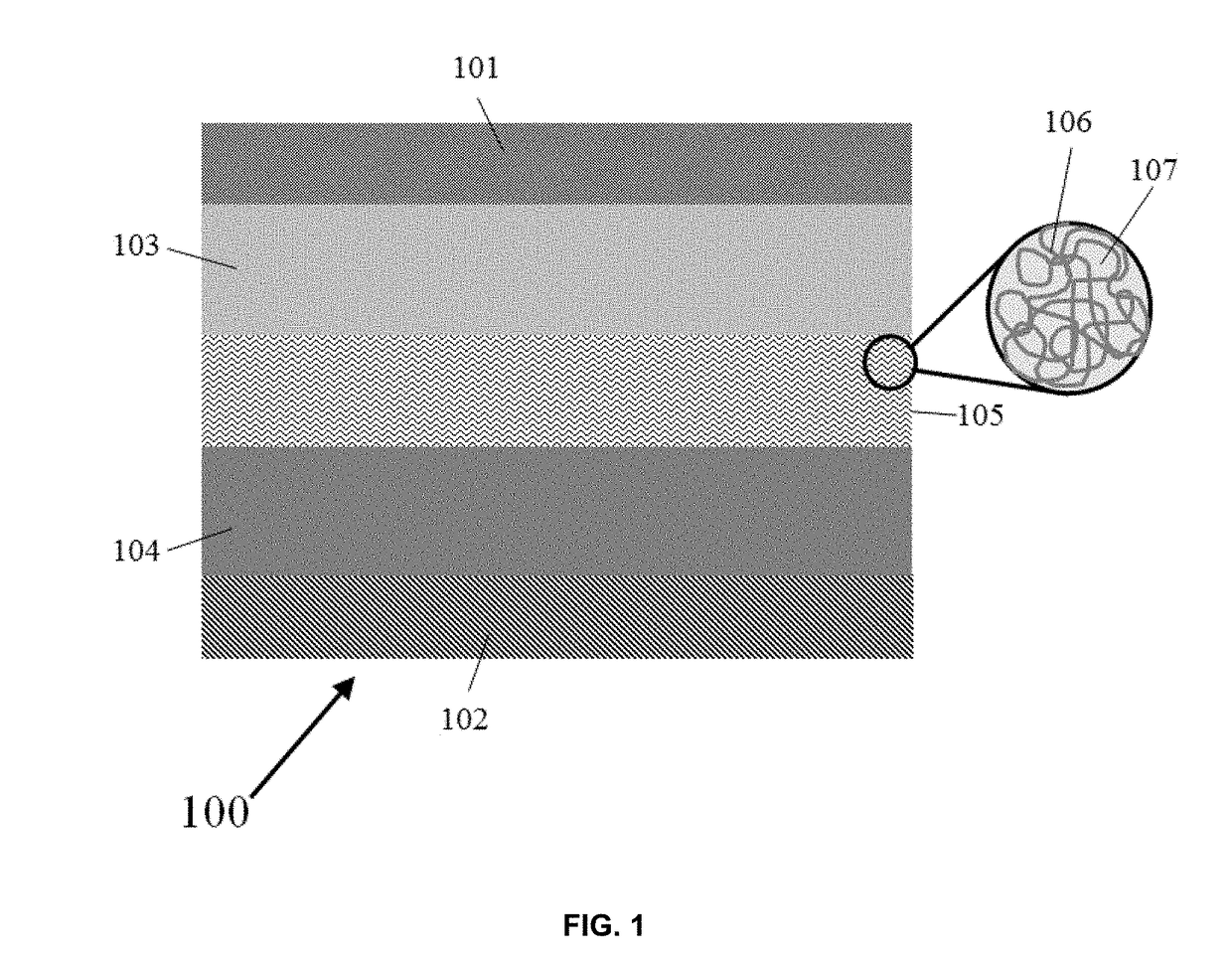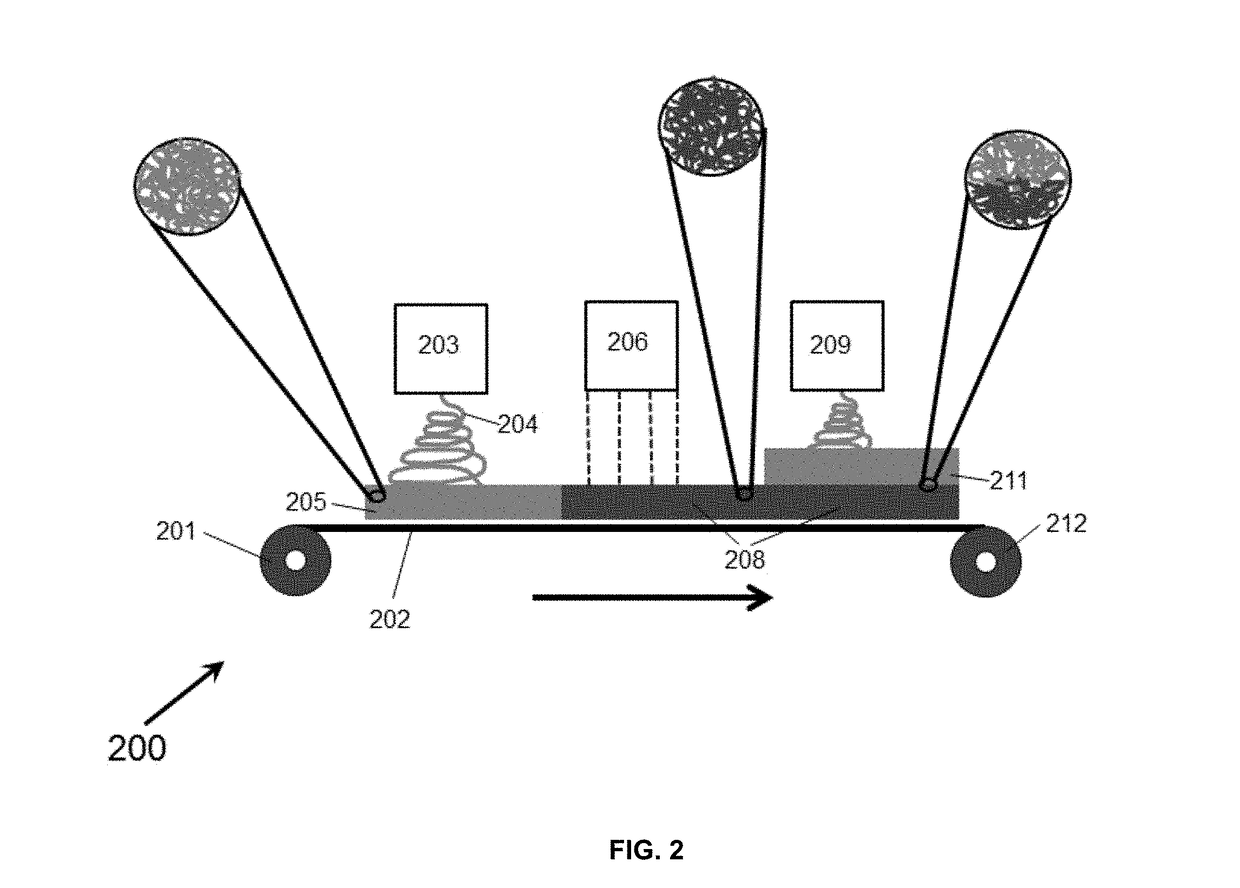Separator For Use in Electrochemical Cells and Method of Fabrication Thereof
a technology for separation devices and electrochemical cells, which is applied in the direction of cell components, electrical equipment, cell component details, etc., can solve the problems of insufficient safety protection against thermal runaway events, complex manufacturing process, and standard commercial separators not optimized for high-rate battery applications, so as to improve the safety and electrochemical performance of secondary batteries, and improve the ability of high-rate and power density performance of secondary batteries. , the effect of reducing the cost of production
- Summary
- Abstract
- Description
- Claims
- Application Information
AI Technical Summary
Benefits of technology
Problems solved by technology
Method used
Image
Examples
example 1
[0059]1a. Fabrication of Heat-Resistant Separator.
[0060]EB-crosslinked NF separators were prepared by electrospinning acetone solution mixtures of PVdF-co-HFP (product no. Solef 21508 from Solvay; polymer concentration was 9 wt %) copolymer and triallyl isocyanurate (TAIC; 0, 5, 7.5, and 10 wt % relative to the weight of the polymer) cross-linker, under a high-voltage electric field (25 kV). The electrospinning solution also contained NaI (0.1 wt % relative to total weight of solid polymer). A needle-based electrospinning machine was used for nanofiber production. A solution feed rate of 0.05 mL / min and gap distance of 10 cm between emitter and collector electrode were used during the electrospinning manufacturing process. FIGS. 5A-5C show the manufactured NF materials consisting of flexible, nonwoven membranes with uniform fiber size. The fiber size distribution, determined using FibraQuant™ fiber analysis software, is d ˜223 nm (±63 nm). Cross-linking of the manufactured NF membra...
example 2
Electrochemical Evaluation of NF Separator.
[0067]2a. Continuous Rate Evaluation
[0068]To demonstrate the impact of improved ionic conductivity on battery cell performance, the rate capability of cells with NF separator was benchmarked against “Comparative Sample 1” separator. Rate tests were done on high-voltage, LiNi0.5Mn1.5O4 (LNMO) cathode cells built with two types of anodes (lithium metal and graphite carbon). Cells built with a Li anode are referred to as “half-cells”, while cells containing carbon anodes are referred to as “full-cells.” Continuous rate tests were done by charging cells under a constant-current (CC) to 100% state-of-charge (SOC) at a C / 4 (4-hr) rate, and then continuously discharging at varying rates from C / 5 (5-hr) to 8 C (8 min). The charge-discharge voltage window for the LNMO cells was 5 V to 3 V. FIGS. 11A, 11B and FIGS. 12A, 12B show that the EB-crosslinked separator provides a clear advantage over “Comparative Sample 1” in terms of improved capacity rete...
PUM
| Property | Measurement | Unit |
|---|---|---|
| porosity | aaaaa | aaaaa |
| size | aaaaa | aaaaa |
| diameter | aaaaa | aaaaa |
Abstract
Description
Claims
Application Information
 Login to View More
Login to View More - R&D
- Intellectual Property
- Life Sciences
- Materials
- Tech Scout
- Unparalleled Data Quality
- Higher Quality Content
- 60% Fewer Hallucinations
Browse by: Latest US Patents, China's latest patents, Technical Efficacy Thesaurus, Application Domain, Technology Topic, Popular Technical Reports.
© 2025 PatSnap. All rights reserved.Legal|Privacy policy|Modern Slavery Act Transparency Statement|Sitemap|About US| Contact US: help@patsnap.com



